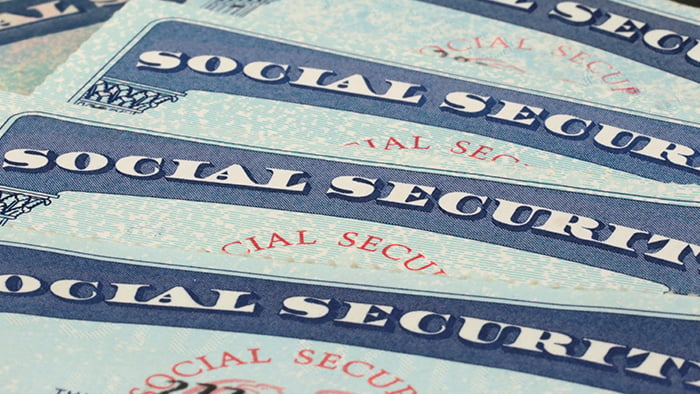What is a fraud alert?
A fraud alert is a notification on your credit report that indicates you may be a victim of fraud or identity theft. It’s a security measure that warns lenders and creditors to take extra steps to verify your identity before opening new accounts or altering existing ones. All three major credit bureaus — Experian, Equifax, and TransUnion — offer fraud alerts as a free service.
A fraud alert is not the same as freezing your credit. A free fraud alert is an added layer of protection, whereas a credit freeze completely restricts access to your credit report until you lift the freeze. With a fraud alert in place, you can still make new credit applications provided you can verify your identity. If your credit is frozen, no one can get new credit in your name.
How to place a fraud alert
To place a fraud alert, contact any of the three credit bureaus online, by phone, or by mail. Then, request the type of fraud alert that you want, choosing from an initial fraud alert, extended fraud alert, or active duty fraud alert.
You’ll be asked to provide a copy of an identifying document, like a driver’s license or passport, and proof of your address to verify your identity. Once this step is complete, the bureau you contact will place the alert and notify the other two bureaus to do the same.
You can contact the three credit bureaus using the details below:
| Experian |
Equifax |
TransUnion |
| Online |
Online |
Online |
| 1-888-397-3742 |
1-888-397-3742 |
1-800-680-7289 |
Experian Security Freeze
P.O. Box 9554
Allen, TX 75013 |
Equifax Information Services LLC
P.O. Box 105069
Atlanta, GA 30348-5069 |
TransUnion Consumer Solutions
P.O. Box 2000
Chester, PA 19016 |
Types of fraud alerts
There are three types of fraud alerts you can set up: an initial fraud alert, extended fraud alert, or active duty fraud alert. Each one is best suited to a specific purpose and provides a slightly different type of protection.
Here’s a full explanation of each one:
 Initial fraud alert
Initial fraud alert
An initial (or temporary) fraud alert is available to anyone who suspects they are or may become a victim of fraud or identity theft. It lasts for one year and is renewable. Anyone can apply for an initial fraud alert by contacting a credit bureau. Once it’s approved, they’ll contact the others.
When an initial fraud alert is in place, businesses and creditors are required to take extra steps to verify your identity before granting new credit — typically contacting you directly to confirm you’re actually applying for the credit. You’re also entitled to request a free copy of your credit report from any of the major credit bureaus during the 12-month period following the activation of the alert.
 Extended fraud alert
Extended fraud alert
An extended fraud alert is available exclusively to people who can prove they’re a victim of identity theft. It lasts for seven years and is renewable. To apply for an extended fraud alert on your credit report, you must submit an FTC Identity Theft Report or a police report with your fraud alert application to one of the bureaus.
Besides verifying your identity for credit services, an extended fraud alert requires credit bureaus to remove you from any list shared with third parties for pre-approved credit or insurance offers for five years — unless you opt out. You’re also entitled to request two free copies of your credit report during the 12-month period following the activation of the alert.
 Active duty alert
Active duty alert
An active duty fraud alert is available exclusively to active-duty service members, helping protect them from fraud or identity theft while deployed. It lasts for one year and is renewable if your deployment extends beyond this period.
In addition to verifying your identity for credit services, an active fraud alert requires credit bureaus to remove you from any list shared with third parties for pre-approved credit or insurance offers for two years — unless you choose to opt in.
How to choose the right fraud alert
What’s the right fraud alert for you? An initial fraud alert is for those who suspect they are victims of fraud. Extended fraud alerts are for verified fraud victims. Active duty alerts are for active duty service members. Here’s a breakdown of each fraud alert:
| |
Initial fraud alert |
Extended fraud alert |
Active duty fraud alert |
| Who is it for? |
Suspected victims of fraud or identity theft |
Confirmed victims of fraud or identity theft |
Active duty service members |
| Duration of alert |
1 year (renewable) |
7 years (renewable) |
1 year (renewable) |
| Eligibility requirements |
None |
An FTC identity theft report or police report |
Must be an active duty service member |
What does a fraud alert do?
A credit fraud alert notifies credit card companies and other creditors that you may be the victim of fraud/identity theft. Issued through any major credit bureau, a fraud alert on your credit report warns creditors to take extra steps to verify your identity before approving new credit requests. This helps prevent unauthorized accounts from being opened in your name.
 Placing a fraud alert with one bureau notifies all creditors and bureaus to take protective measures.
Placing a fraud alert with one bureau notifies all creditors and bureaus to take protective measures.
When should I use a fraud alert?
You should use a fraud alert if you suspect — or know — you’re a victim of fraud or identity theft. Active duty service members should also use a fraud alert during deployments, since being overseas for an extended period of time may put them at greater risk of fraud.
Suspect you might be vulnerable? Here are some common signs of fraud that could prompt you to place a fraud alert:
-
Unauthorized transactions: Unrecognized charges on your credit card or bank account could mean someone has access to your card or financial accounts.
-
New activity: New credit accounts, loans, or services you didn’t apply for appearing on your credit report or bank statements could indicate someone has stolen your identity.
-
Debt collection calls: Calls or notices of overdue payments for debts that aren’t yours can be a sign that someone has racked up debt in your name.
-
Missing bills or statements: If expected bills stop arriving, fraudsters may have gotten access to your financial accounts and changed your address.
-
Tax filing issues: If your tax return submission is rejected, fraudsters may have already filed one under your name to steal your refund.
-
Denial of credit: Being denied for a loan or credit card unexpectedly could be a sign of fraudulent activity harming your credit score.
-
Stolen SSN: A stolen Social Security number can result in various types of fraud, including opening new accounts, tax fraud, and employment fraud.
Preventing identity theft requires a proactive approach. Credit protection services, and tools like BreachGuard and our hack checker can help quash fraud before major damage is done. But things happen. If you know or suspect you’ve been targeted, report the identity theft immediately.
Help secure your data with Avast
A fraud alert is a great defense against credit fraud following identity theft — but tools like Avast Secure Identity help you take a more proactive approach. Our identity monitoring features scan social media, the web, and the dark web for possible data breaches and leaks of your personal information. That helps you know when it might be time to take action, giving you a head start in defending against fraud that could harm your finances or credit score.
Secure your data to help stop fraudsters from exploiting it with Avast Secure Identity today.
FAQs
What happens once I submit a fraud alert?
Once you submit a fraud alert on your credit report, creditors must take extra steps when verifying your identity before extending credit or other financial services. Credit fraud alerts take effect immediately when applied online, whereas requests over phone or mail will take a few days to process. You only need to submit a fraud alert application to one of the major credit bureaus, and it will notify the others.
How do I update my fraud alert information?
To update your fraud alert information, you’ll need to contact the credit bureau where you initially placed the alert. Be prepared to verify your identity with documents (passport, driver’s license, etc.) and/or your Social Security number. For some changes, like canceling the credit monitoring alert service, you may have to contact all three credit bureaus separately.
Will a fraud alert affect my credit score?
No, a fraud alert will not affect your credit score. It offers you an extra layer of protection by placing a red flag on your credit report, warning creditors to thoroughly verify your identity before issuing financial services. To check your credit score, use the best credit monitoring services and apps. Also, use a credit score simulator to make savvy financial decisions.
Can I place a fraud alert for my family members?
If a family member is unable to place a credit fraud alert by themselves, it is possible to place one for them. Each of the three bureaus has a different process, and you may need to have the proper documentation, like a power of attorney. For children under the age of 16, parents can request a fraud alert on their child’s credit file by mail.












